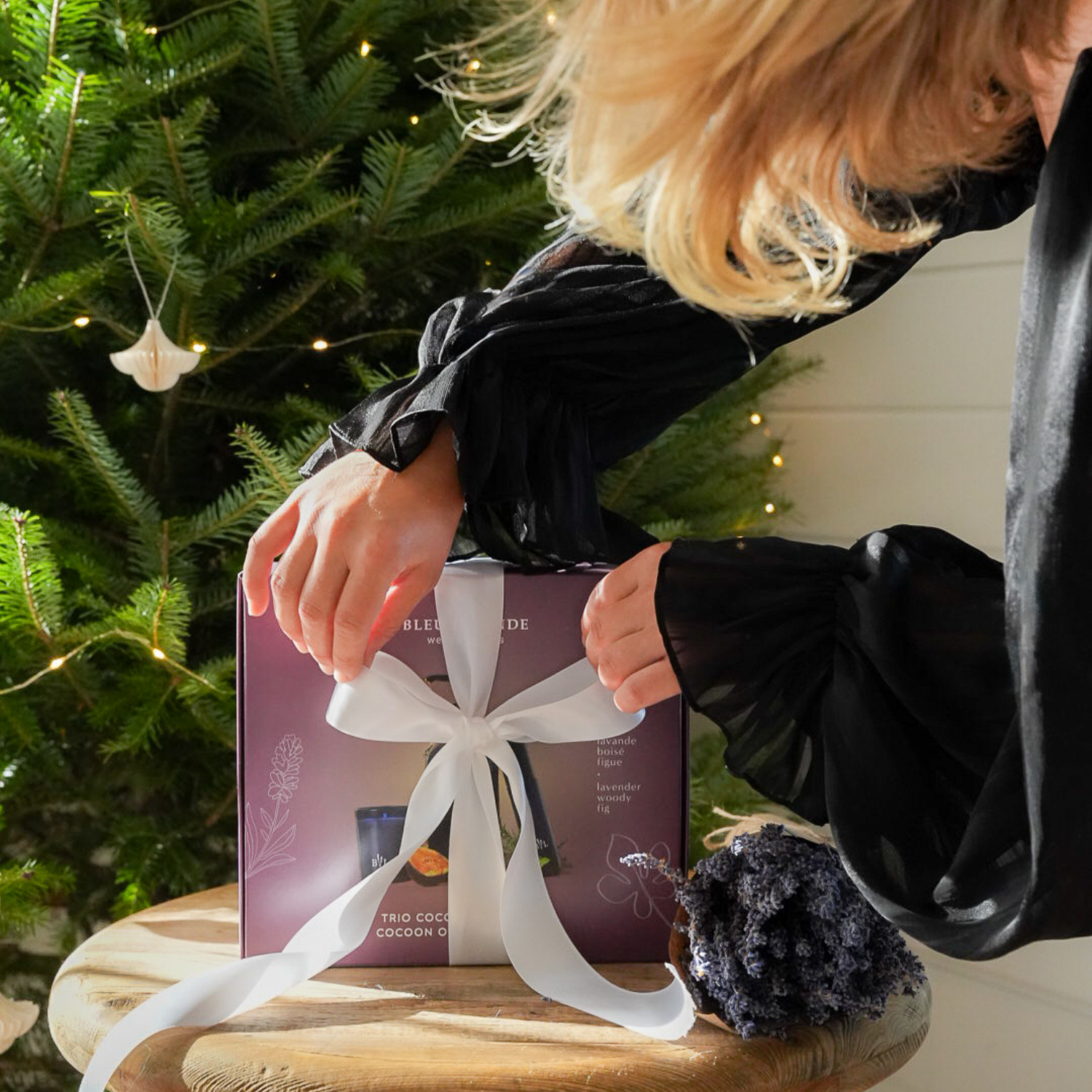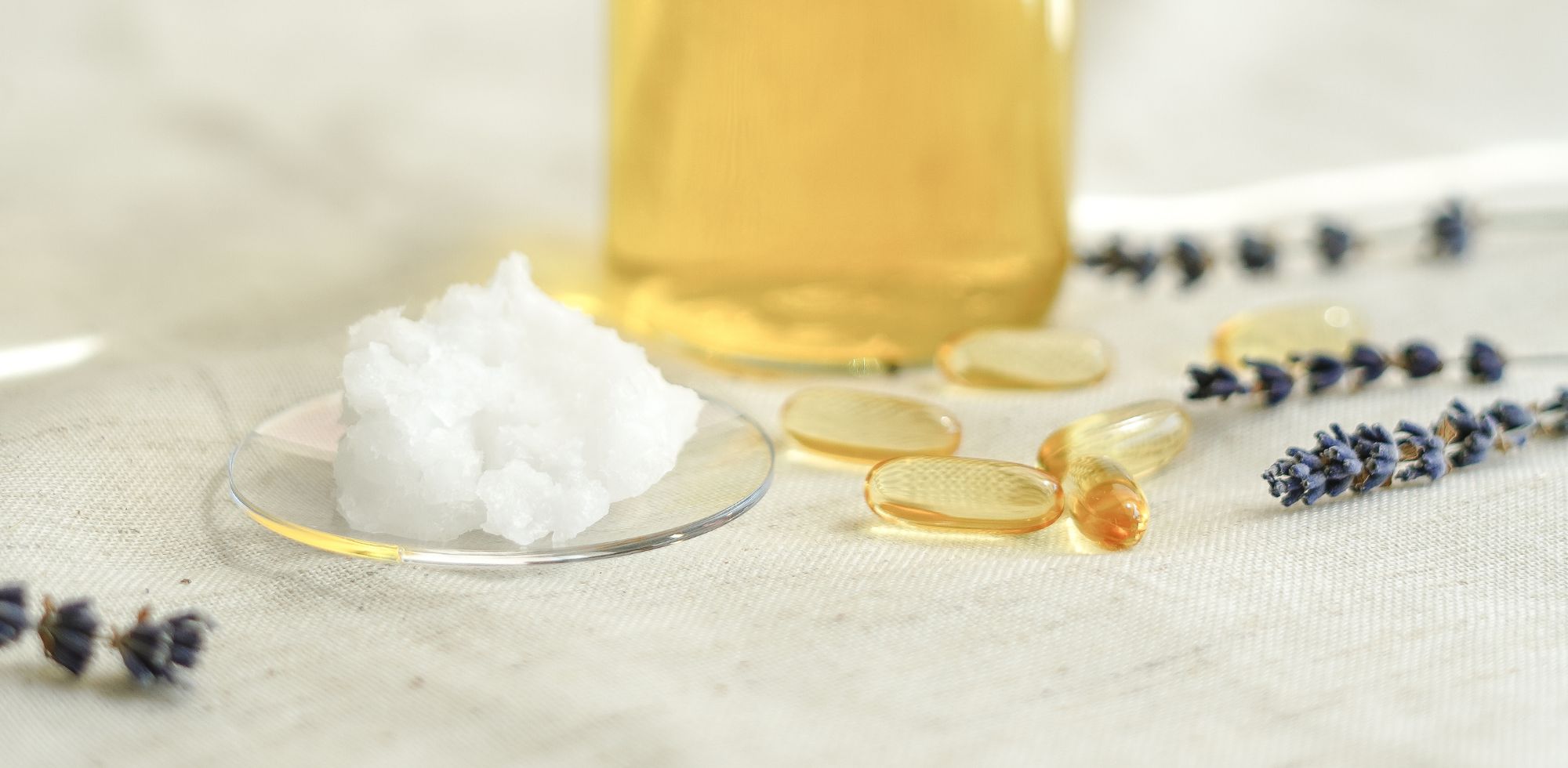Effets naturels bénéfiques
Ingrédients d'origine naturelle
Nos produits partagent une caractéristique fondamentale : ils renferment des substances inestimables de notre terre, soigneusement sélectionnées pour leurs bienfaits naturels sur l'ensemble de l'organisme. Chacun de ces extraits de plantes renferme des principes actifs aux actions spécifiques, et leur combinaison permet d'optimiser leur efficacité. Cette approche tire parti de la richesse de la nature pour offrir des solutions bénéfiques pour la santé et le bien-être.
Liste
Découvrez nos ingrédients naturels
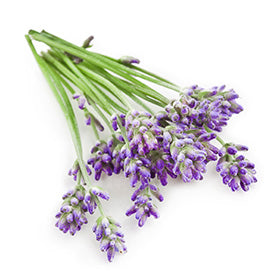
Huile essentielle de lavande

Huile essentielle de lavande
Si vous ne deviez avoir qu'une seule huile essentielle dans votre pharmacie familiale, cela devrait être de lavande! Il suffit de sentir son parfum pour calmer spontanément notre esprit. Et si cela avait le même effet sur notre peau? C'est une huile véritablement magnifique parce qu'en plus de son arôme sublime elle comporte un nombre étendu d'applications. L’huile essentielle de lavande fine utilisée en aromathérapie contribue à apaiser, favoriser la relaxation, soulager les inconforts liés aux maux de tête, au rhume et à la toux. Naturellement riche et parfumée, elle peut être employée en diffusion, par inhalation dans l’eau du bain ou directement sur la peau.
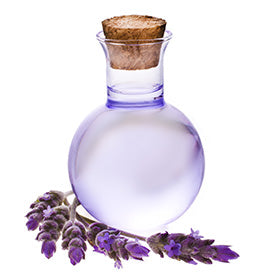
Eau florale

Eau florale
L'eau florale est obtenue par la condensation de la vapeur extraite de l'huile essentielle, tandis que l'eau aromatisée contient une certaine quantité d'huile essentielle que l'on ajoute. Inutile de préciser quel produit est le plus pur! Elle constitue la précieuse eau recueillie après distillation de la lavande officinale. L’eau florale de lavande fine procure à l’épiderme un aspect régénéré tout en protégeant la barrière d’hydratation de la peau et en apaisant la peau sèche. Elle a aussi comme vertus d’adoucir, de rafraîchir la peau et d’atténuer les rougeurs causées par la sécheresse.
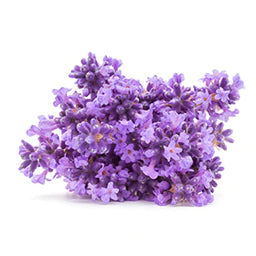
Lavande de mer

Lavande de mer
La lavande de mer, un ingrédient protecteur anti-âge d’exception et elle procure de la souplesse au derme. Elle protège de la déshydratation, procure à la peau une apparence lissée et repulpée, plus particulièrement les plus sujettes aux signes de l'âge.
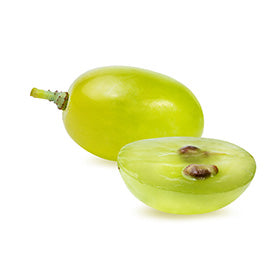
Huile de pépin de raisin

Huile de pépin de raisin
Cette huile est riche en minéraux, protéines, acides gras essentiels, flavonoïdes (qui sont d’excellents antioxydants) et vitamine E pour une peau d’apparence plus jeune. Elle retarde l’apparence des signes de vieillissement de la peau et offre à la peau un aspect visiblement plus revitalisé et radieux.
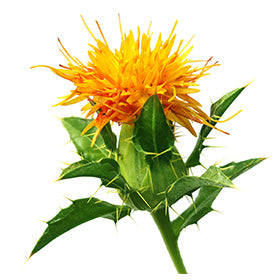
Huile de carthame

Huile de carthame
L’huile de carthame est extraite des graines de la plante herbacée nommée Carthame des teinturiers. Elle est très riche en vitamine E et en acides gras essentiels (oméga 6) qui améliorent l’élasticité de la peau. Ils sont des éléments hydratants nutritifs indispensables à la douceur, à l’éclat et à la souplesse de la peau. La vitamine E aide également à prévenir l’apparence des signes du vieillissement prématuré et de la fragilisation de la peau.
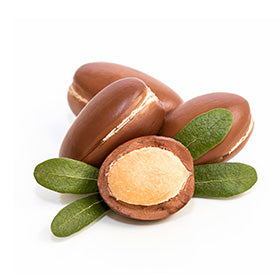
Huile d'argan

Huile d'argan
L'huile d’argan est utilisée depuis toujours par les femmes au Maroc dans leurs soins de beauté. C’est une huile naturelle qui provient de la noix de l’arbre et qui procure des bienfaits cosmétiques liés au vieillissement de la peau. Exceptionnellement riche en acides gras essentiels oméga-6, en vitamine E et en polyphénols, l'huile d'argan regorge de propriétés hautement hydratantes, antioxydantes et régénératrices de la barrière d’hydratation de la peau.
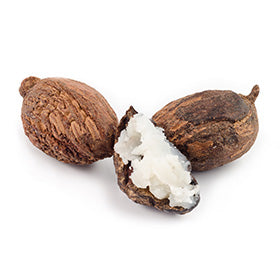
Beurre de karité

Beurre de karité
Le beurre de karité est extrait des fruits du karité, un arbre poussant dans les savanes de l’Afrique de l’Ouest. Les fruits que produit cet arbre ressemblent à des noix contenant une sorte d’amande blanche qui est naturellement grasse. C’est après transformation qu’elle devient cette fameuse pâte jaunâtre que l’on appelle beurre de karité. Il est utilisé depuis des millénaires en Afrique. Ainsi, on raconte que la reine Néfertiti lui devait sa grande beauté, car ce beurre renferme d'extraordinaires vertus pour la peau. Grâce à ses vertus hydratantes, il nourrit la peau en profondeur tout en lui redonnant douceur et souplesse. La présence de vitamines A, D, E et F le rend encore plus riche et bénéfique. pour une peau plus saine et radieuse.
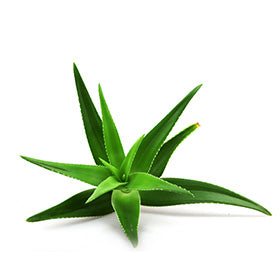
Extrait d'aloès

Extrait d'aloès
L’Aloe Vera, ou Aloe Barbadensis, est un petit cactus de couleur verte qui pousse principalement dans les régions sèches. Le jus de la plante contient 85 % d’une eau riche en minéraux, oligo-éléments et vitamines (A, B1, B2, B3, B6, B9, B12, C, E), qui alimentent les cellules cutanées. Le jus d’aloès est un excellent hydratant : il permet de compenser les pertes en eau de la peau. Cicatrisant cutané : il stimule la réparation de la peau et accélère la microcirculation. Apaisant : il calme les inflammations et soulage les irritations de la peau.
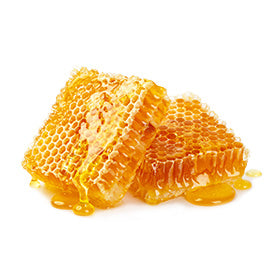
Cire d'abeille

Cire d'abeille
La cire d'abeille est un produit naturel qui a de nombreuses vertus. Premièrement, elle est connue pour protéger de la déshydratation et adoucir la peau. Elle a également des vertus restauratrices très intéressantes pour les lèvres ou les peaux sèches et abîmées. Riche en vitamine A, ce composant naturel permet également de protéger la peau sèche tout en procurant un effet lissant à l’épiderme pour une peau d’apparence plus saine.
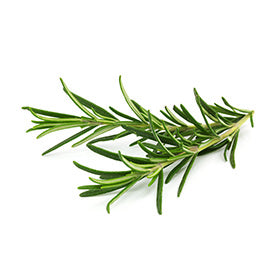
Huile essentielle de romarin

Huile essentielle de romarin
Que ce soit en cuisine, en tant que cosmétique ou en phytothérapie, on exploite les feuilles et les sommités des fleurs séchées qui contiennent la plus grande concentration de principes actifs. Les bienfaits du romarin s’expliquent par sa teneur en nombreuses substances actives dont les effets bénéfiques sur l’organisme sont reconnus. Utilisée dans des produits cosmétiques, l’huile essentielle de romarin procure à la peau un effet visiblement énergisée, rajeunie et plus claire.

Huile essentielle de cyprès

Huile essentielle de cyprès
L’huile essentielle de cyprès est issue de l’arbuste du même nom et est dynamisante et tonifiante. Pour la peau, elle a des effets bénéfiques sur le phénomène des jambes lourdes par son effet rafraîchissant qui offre une sensation reposante ainsi que sur l’apparence de la cellulite par hydratation de la peau.
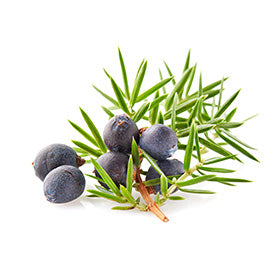
Huile essentielle de genévrier

Huile essentielle de genévrier
L’huile essentielle de genévrier est très appréciable et reconnue pour ses propriétés qui offrent une sensation apaisante de la douleur. Elle est aussi un incontournable pour jouer un rôle dans l’élimination des toxines en offrant une peau d’apparence saine. Elle est d’une aide précieuse pour l'organisme qui n'arrive plus à éliminer l'eau normalement. Elle redynamise la circulation sanguine et est donc indiquée en cas de rétention d'eau et de problèmes de cellulite.
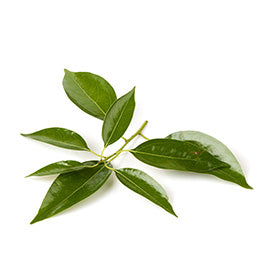
Huile essentielle de camphrier

Huile essentielle de camphrier
Le camphre vient d’un arbre aromatique appelé camphrier (Cinnamomum Camphora), très haut qui peut atteindre 50 mètres de haut et 12 mètres de circonférence. Cet arbre est de la famille des lauriers, avec des fleurs blanches ou de couleur crème et des fruits de baies rouges ou bleu-noir. L’huile de camphre est particulièrement connue pour ses propriétés stimulantes qui tonifie le corps et l’esprit et énergisantes qui redonne force et vigueur aux muscles fatigués.
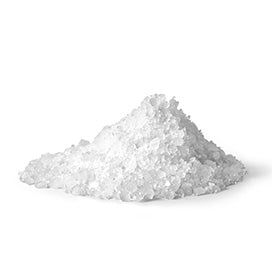
Sels minéraux marins

Sels minéraux marins
Des sols de la Saskatchewan au Canada, les sels de minéraux marins sont composés de sels roses canadiens 100 % naturels et purs de très haute qualité qui sont recueillis sous la terre où gît une mer enfouie depuis plus de 400 millions d’années. Ils exfolient la peau en douceur, la rechargent en minéraux pour la rendre visiblement plus saine et éliminent les toxines naturellement évacuées par les pores. La pureté et la richesse de ces minéraux en ont fait sa renommée auprès des thérapeutes les plus prestigieux en Amérique du Nord. Riches en magnésium, potassium et sodium, ces sels sont exfoliants et hydratants, tout en procurant à la peau un tonifiant naturel.
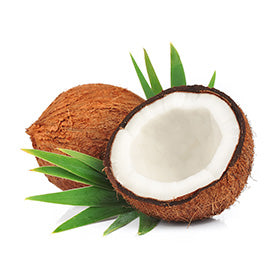
Huile de coco

Huile de coco
L’huile de coco est issue de la pression de pulpe de coco fraîche. La composition de l'huile de coco est remarquablement nutritive par son taux élevé d’acides gras essentiels naturels qui aide à lutter contre la déshydratation. Elle contient aussi de la vitamine A et de la vitamine E qui lui donnent des propriétés antioxydantes et ajoutent de l’éclat à la peau. C’est une huile douce aux vertus réparatrices et hydratantes de la peau sèche.

Huile de ricin

Huile de ricin
L'huile de ricin, de dénomination INCI "castor oil", heureusement, ça n'a rien à voir avec de la graisse de castor ! Son nom est Ricinus communis seed oil. Le ricin est un arbre d’origine tropicale (Brésil, Inde, Afrique) avec des feuilles souvent vertes et denses, des fleurs et des fruits parfois recouverts de piquants. À l’intérieur des fruits se trouve la fameuse graine qui fournit l’huile. Son acide gras spécifique : l'acide ricinoléique, fait de cette huile un soin beauté aux vertus reconnues comme étant adoucissante et régénérante de la barrière d’hydratation de la peau, déjà connues de l'Antiquité puisque Cléopâtre l'utilisait comme démaquillant.
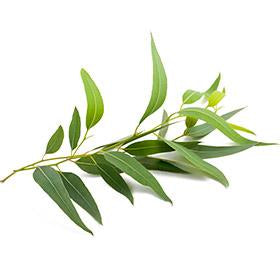
Huile essentielle d'eucalyptus

Huile essentielle d'eucalyptus
Originaire d'Australie, le genre eucalyptus a donné plus de 600 espèces allant du simple arbuste à de très grands arbres. Plusieurs espèces arborescentes sont depuis longtemps cultivées dans le bassin méditerranéen et dans toutes les régions subtropicales, tant en Orient qu'en Occident. Parmi les huiles essentielles d'eucalyptus, celle d'eucalyptus Globulus est sans doute la plus efficace et la plus puissante au niveau de la sphère respiratoire.
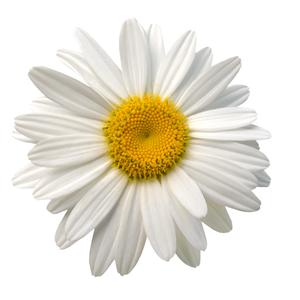
Huile essentielle de camomille

Huile essentielle de camomille
La camomille est un nom vernaculaire de plusieurs espèces de plantes de la famille des Astéracées (Composées). Son nom d'origine grecque indique qu'elle pousse près du sol (chamos) et que ses jeunes fleurs rappellent l'odeur de la pomme (melos). La camomille est une plante herbacée très répandue en Europe. On s'en servait déjà dans l'Antiquité pour combattre la fièvre et les insolations et, au Moyen Âge, pour soulager les troubles intestinaux et favoriser le sommeil. La camomille est très prisée par les personnes ayant la peau sensible car elle crée une sensation apaisante et on lui prête également des vertus adoucissantes.
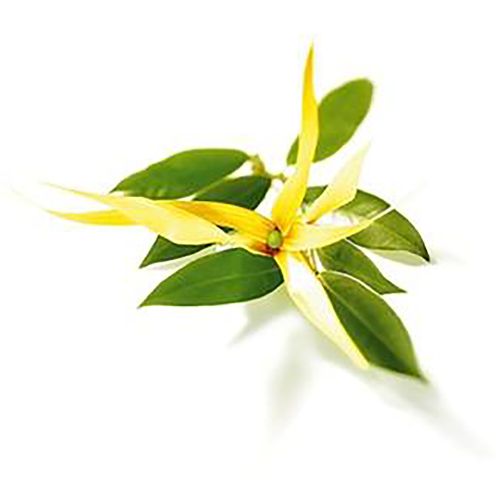
Huile essentielle de cananga

Huile essentielle de cananga
L’huile essentielle de cananga permet non seulement de réguler la tension artérielle, mais également d’apaiser l’esprit et de stabiliser le système nerveux central. Elle permet aussi la décontraction des muscles en cas de spasmes.
En application sur la peau ou versée dans un bain, cette huile agit directement sur l'ensemble de votre organisme et favorise la détente.
Grâce à l’huile essentielle de cananga votre peau sera plus douce, moins sèche et moins terne.
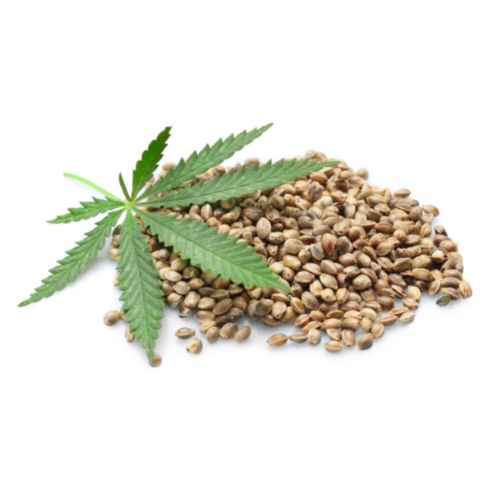
Huile de graines de chanvre

Huile de graines de chanvre
L’huile de chanvre est obtenue par pressage à froid des graines de chanvre. Elle doit ses qualités cosmétiques à sa forte teneur en vitamine E, en oméga 3 et en oméga 6. Leur pourcentage et leur équilibre rendent l'huile très proche du sébum humain.
Elle offre ses vertus à la fois sur le plan cutané et capillaire. C’est un excellent hydratant en profondeur (jusqu’au derme) qui contient également des omégas 9, de la vitamine E (gamma-tocophérol), des acides aminés et des minéraux. Elle agit comme antioxydant, anti-âge, émollient et adoucissant. Un must pour une peau d’apparence plus lisse et saine.
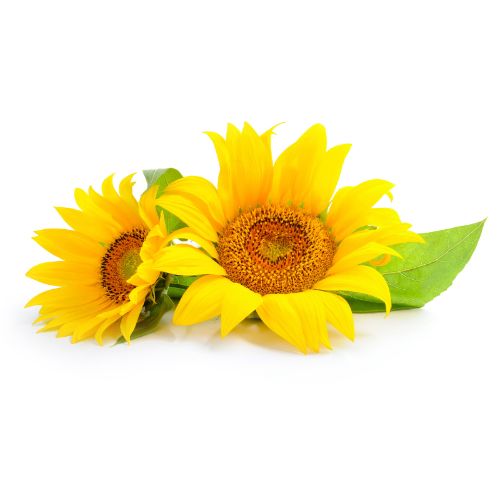
Huile de tournesol

Huile de tournesol
L'huile de tournesol est réputée pour son utilisation culinaire, mais elle regorge aussi de bienfaits pour la peau et pour le bien-être en général.
Son atout? Une teneur en acide linoléique exceptionnelle, qui peut dépasser 75 % de sa composition. Cet acide gras polyinsaturé (oméga 6) joue un rôle crucial dans l'hydratation de la peau, qui ne peut le synthétiser. En protégeant et en fortifiant le noyau des cellules, il les aide à lutter contre les agressions (comme les rayons UV et la pollution).
Elle a une forte concentration en vitamine E qui, par sa puissante action antioxydante, protège la jeunesse de l'épiderme en maintenant l'intégralité des membranes cellulaires. Mieux défendue, la peau vieillit moins vite.
Les ingrédients à éviter
Chez Bleu Lavande, élaborer des produits exempts d'ingrédients nocifs ou même discutables est un choix d’entreprise que nous avons fait, il y a plusieurs années. Nos produits créés avec soins ne contiennent aucun parabène, sodium laureth sulfate, phenoxyéthanol, MIT, DEA, phtalates, chlore, phosphates, ou autres produits pétroliers. Cette approche découle de notre engagement envers des ingrédients naturels et respectueux de la santé de nos clients. Nous croyons en l'importance de fournir des produits de soins de la peau et de bien-être qui n'ont pas d'effets nocifs sur votre corps ni sur l'environnement.
Voici les ingrédients que vous devriez éviter lorsque vous inspectez les étiquettes de vos produits.
Le Sodium Laureth Sulfate (SLS) est un tensioactif synthétique fabriqué à partir de sulfates de pétrole. C’est un ingrédient courant dans les produits cosmétiques tels que les shampooings, les gels douche et les bains moussants en raison de ses propriétés détergentes, moussantes et aussi, parce qu’il est peu coûteux.
Cependant, le Sodium laureth sulfate est un ingrédient discutable. Plusieurs études ont suggéré que le SLS peut être irritant pour la peau et les yeux. De plus, il peut provoquer la sécheresse de la peau et des cheveux, sans oublier la dermatite de contact chez certaines personnes. Il vaut la peine d'être vigilant si vous avez une peau sensible ou plus délicate. Le SLS peut également altérer le pH naturel de la peau. Toutefois, ces risques sont souvent liés à une exposition prolongée et/ou à des concentrations élevées.
Comme il existe des alternatives plus douces et respectueuses de l'environnement, Bleu Lavande a décidé, il y a plusieurs années, de retirer complètement le Sodium Laureth Sulfate de tous ses produits.
Le phénoxyéthanol est un composé chimique largement utilisé en cosmétique et dans certains produits de soins personnels en tant que conservateur antibactérien, stabilisant, et solvant fixateur de parfums qui permettent d’augmenter la durée de vie des produits.
Il existe cependant des préoccupations quant à la sécurité du phénoxyéthanol. Il fût associé à des réactions cutanées et des irritations chez certaines personnes. Le phénoxyéthanol est également discuté en termes d’impact sur la santé à long terme. Comme il peut être absorbé par la peau, il a suscité des inquiétudes quant à ses effets potentiels sur le sang et le foie et est suspecté d’être un perturbateur endocrinien, bien que ces préoccupations fassent l'objet de débats et de recherches.
En outre, son procédé de fabrication est discutable également. En effet, le phénoxyéthanol est obtenu par un procédé chimique très polluant : l’éthoxylation. Sa production est à la fois dangereuse pour l'homme (inflammable, irritante, génotoxique), toxique pour l'eau et les sols et très énergivore.
Comme cet ingrédient a mauvaise réputation, Bleu Lavande a décidé de le retirer complètement de tous ses produits.
APPELLATIONS COMMUNES : PROPYLPARABÈNE, BUTYLPARABÈNE, LE MÉTHYLPARABÈNE ET L’ÉTHYLPARABÈNE
Les parabènes sont des agents de conservation antimicrobiens et antifongiques qui permettent d’augmenter la durée de vie des produits et d’empêcher ou de retarder la prolifération de bactéries.
Cependant, ça a un prix. Ils ont été associés à un risque potentiel de cancer du sein et pourraient agir comme perturbateur endocrinien en imitant l’œstrogène dans le corps humain. Des risques dermatologiques sont réels et le vieillissement prématuré de la peau lors d’une exposition au soleil peut être accru. Restez à l’affût et surveillez la liste d’ingrédients sur vos produits!
APPELLATIONS COMMUNES : PHTALATE DE DIBUTYLE ou DBP, PHTALATE DE DIÉTHYLE ou DEP, DIETYLPHTALATE
Les phtalates sont aussi à l’honneur dans les cosmétiques : parfums, déodorants, laques, gels, vernis à ongle, lotions après-rasage et lubrifiants. Ils servent alors principalement d’agents fixateurs. On doit s’en méfier car comme les parabènes, les phtalates sont soupçonnés d'être des perturbateurs endocriniens (risques pour la reproduction, la fertilité et le développement du fœtus) et sont aussi accusés de favoriser le diabète, une maladie qui semble progresser parallèlement à notre exposition aux phtalates.
ATTENTION! De nombreux produits cosmétiques contenant du parfum peuvent cacher des phtalates sans que ce ne soit clairement indiqué. Dans ce cas, pour limiter le risque, mieux vaut choisir des produits contenant des parfums spécifiés 100 % d'origine naturelle ou des huiles essentielles comme c’est le cas dans tous nos produits!
APPELLATION COMMUNE : MÉTHYLISOTHIAZOLINONE
Le MIT est un agent de conservation allergène méconnu par le public mais fréquemment utilisé par l’industrie des soins corporels. Cet allergène, remplaçant les parabènes, est le méthylisothiazolinone (MI). Cet agent de conservation, déclaré par l’American contact dermatitis society comme l’allergène de l’année 2013, se retrouve dans la plupart des maisons canadiennes, il se cache dans les shampooings, les savons, les crèmes, les mousses, les détergents, le maquillage, les liquides à vaisselles, entre autres.
Des brûlures et des enflures peuvent survenir lorsqu’un produit contenant cet ingrédient est en contact direct avec la peau, certains pouvant développer de l’eczéma de contacte et est aussi toxique pour les organismes aquatiques entraînant des effets néfastes à long terme. Santé Canada a récemment informé l’industrie qu’elle envisageait d’interdire l’utilisation de la méthylisothiazolinone dans les produits sans rinçage (crèmes pour le visage ou le corps, maquillage, etc.) et de réduire la concentration maximale permise dans les produits à rincer (nettoyants pour le corps, shampoing, etc.). Nous avons pris les devants et avons décidé de l’éliminer complètement de nos produits car la santé est primordiale pour nous. La peau est notre plus grand organe, prenons-en soin!
APPELLATION COMMUNE : DIETHANOLAMINE
Le DEA est un agent humidifiant utilisé principalement dans les shampooings, gels douche et bains mousse pour faire mousser. Il peut aussi se retrouver dans le liquide de freins, dégraisseurs et antigel. Ce n’est donc pas un ingrédient que nous voulons retrouver dans les produits qu’on applique sur notre peau!
Dans des études effectuées en laboratoire, le DEA inhibe directement le développement du cerveau du fœtus chez la souris en bloquant l'absorption de la choline, un nutriment nécessaire au développement et au maintien du cerveau. Le DEA semblerait aussi être également associé aux fausses couches.
En savoir plus
Comme je suis allergique à plusieurs produits sur le marché, j’apprécie d’avoir un produit naturel. Merci Bleu Lavande !
D. Tremblay
Boutique en ligne
Voir les produitsNotre essence
À propos
